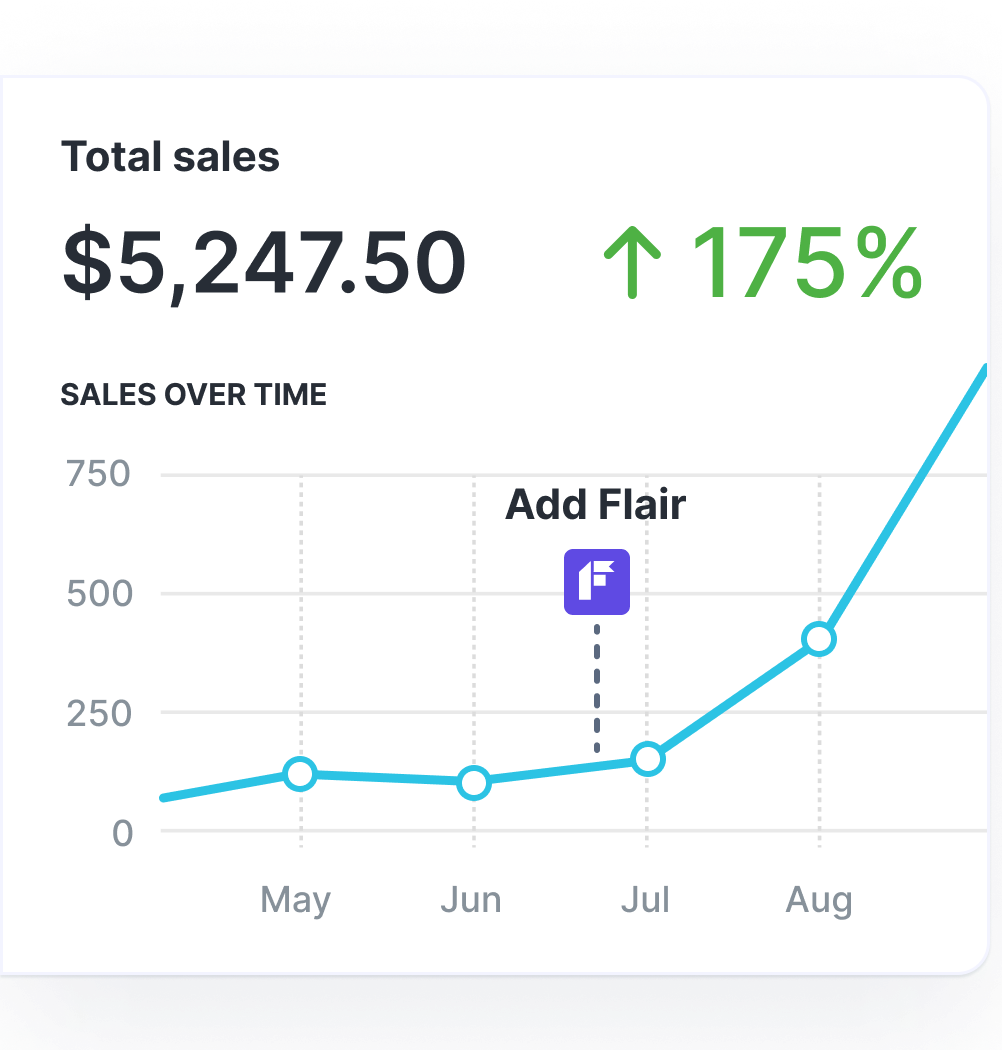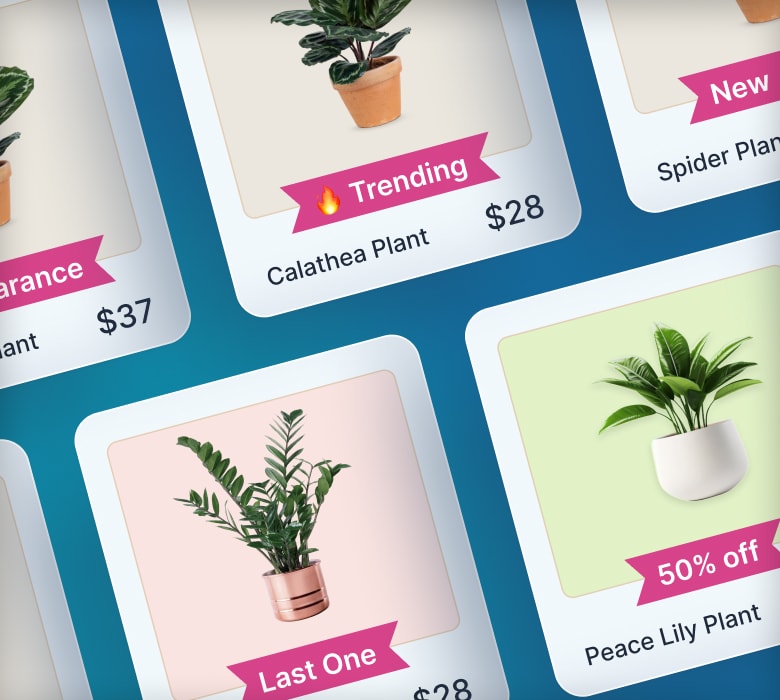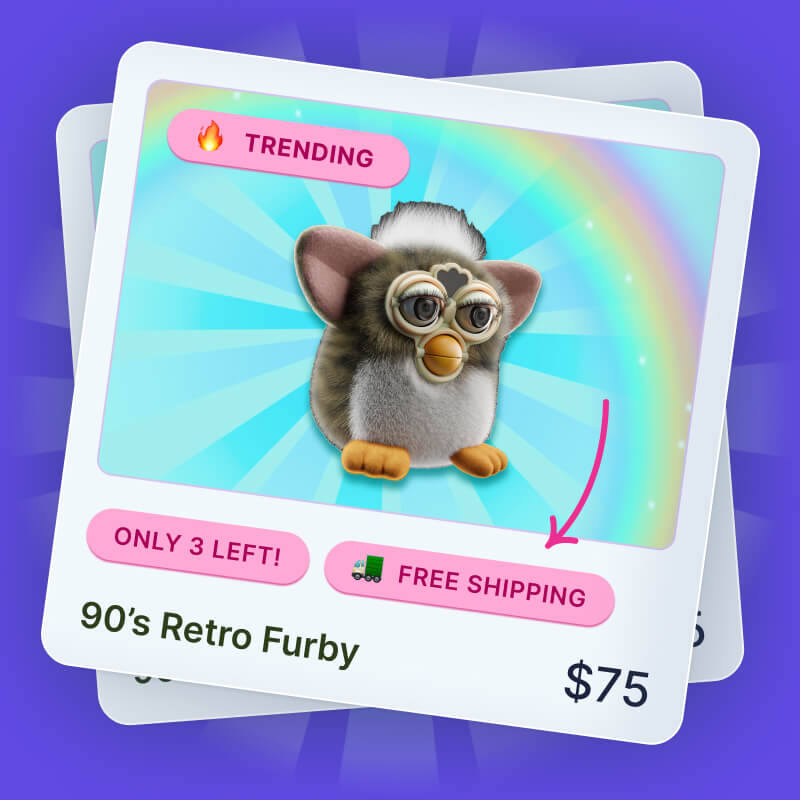How to Run Successful Flash Sales on Shopify

Consumers love flash sales.
How much? Well, just check out this huge spike in retail revenue across the 2023 Black Friday/Cyber Monday weekend, AKA the biggest flash sale of the year:
In fact, they’re so effective that last year, desktop conversion rates leapt from 4.4% on Thanksgiving to 6.5% on Black Friday, while BFCM sales on the Shopify platform topped $9.3 billion.
Not bad, huh?
Now that we’ve persuaded you that they’re a good thing, read on for everything you need to know about running flash sales on Shopify, from planning to execution to promotion.
What Is a Flash Sale?
A flash sale is when a retailer offers a significant discount or promotion for a short period of time, with the goal of using urgency to drive immediate sales.
Some flash sales also add scarcity-related messaging into the mix by limiting the number of products available. For instance, an online store might offer a 50% discount on a specific product, but only on the first 100 purchases.
Benefits of Running Flash Sales
Okay, so we know that flash sales = more revenue.
But let’s get a little more specific about the benefits:
- Sell products faster. Flash sales are one of the most effective ways to clear old stock, thereby cutting your inventory costs and making room for shiny, new products.
- Drive sales through FOMO. The fear of missing out is a powerful motivator. If shoppers know that a discount is ending tomorrow and/or is only available on a limited number of purchases, they’re more likely to act fast.
- Boost customer loyalty. 93% of consumers say they would make repeat purchases from brands that offer attractive discounts — while 48% would actively avoid retailers that don’t run sales and promotions.
However, flash sales aren’t a recipe for guaranteed e-commerce success.
The more aggressive your discount, the lower your margins will be. So, if you’re overly reliant on sales, you’ll struggle to grow sustainably. Not only that, but flash sales inevitably attract bargain-hunters who have no intention of becoming high-spending repeat customers.
Still, if you use them sparingly and at the right times, flash sales can have a massive impact on your bottom line.
How To Prepare for a Flash Sale Launch
Eager to launch your first-ever flash sale? Before you start, make sure you do the necessary upfront planning:
Set Goals for Your Sale
Sure, the ultimate purpose of every flash sale is to sell more stuff.
But it pays to think a little harder about your goals. The more specific you get, the easier it’ll be to choose on-sale products and promote your best offers.
Let’s look at some potential flash sale goals for your e-commerce store:
- Promote specific products or collections
- Boost sales outside of peak shopping periods
- Shift dead and out-of-season stock from your warehouse
- Encourage repeat purchases from existing customers
- Reach new customers
You should also set KPIs to measure the effectiveness of your flash sale against your overarching campaign goal. To give a simple example, if you’re aiming to attract new customers, you could track performance with a target like:
Generate 50% of sales to new customers during flash sale period.
Create a Dedicated Sale Collection
Many merchants choose to create a dedicated Shopify collection for on-sale products and add it to their store’s navigation, just like in this example:

We think this is a smart approach for most retailers.
Building a specific collection for your flash sale makes it easier for shoppers to find your most attractive offers. It also ensures that customers looking for a deal don’t waste their time browsing full-price products.
All of which can help to improve your conversion rate.
Pro tip: Learn how to create your own automated sale collection in our guide: Run a Shopify Sale: Boost Conversions With Tactical Discounts & Promotions.
Check Inventory Levels
Provided you’re offering an attractive promotion, there’s a good chance your flash sale items will be in high demand. Without the right planning, this can become a problem, because you don’t want your sale products selling out too early.
We know what you’re thinking: “How can selling products too fast be a bad thing? Surely that’s the whole point of a flash sale?”
Sure, it’s good for your bottom line. But stock shortages can actually damage your reputation and erode consumer confidence. Indeed, 73% of shoppers feel less loyal to brands after encountering out-of-stock products, while 59% say experiencing regular stockouts makes them less inclined to keep shopping with a retailer.
So it pays to check your stock levels before launching your sale. And consider installing an inventory management app to help forecast sales volumes.
Pro tip: Check out our roundup of the Best Shopify Apps To Increase Sales.
Choose Your Sale Period
Before triggering your flash sale, you need to decide how long it’ll run for.
The shorter the duration, the more you’ll be able to leverage feelings of scarcity and urgency to drive immediate action. But, on the flip side, shorter sales leave you with less opportunity to reach customers — which might limit your overall sales.
But that’s not the only time-related decision you need to make. You also have to choose the dates on which your flash sale will take place. Consider the following factors:
- Day of week: When do you typically see the highest volumes of traffic and conversions? And do you want your flash sale to cover “peak” or “off-peak” dates?
- Time of day: When do you see the highest traffic levels and/or email open rates? It makes sense to launch your sale at a time when most shoppers are likely to see your announcement.
Use your analytics reports to find the ideal sale period for your store.
How To Promote a Flash Sale With Product Labels
You’ve done all the logistical planning. Now, it’s time to consider how you’ll raise awareness of your flash sale. Because if no one knows it’s happening, you can forget about hitting your sales targets.
One of the most effective ways to promote a flash sale is to use product labels:

You can use these attention-grabbing badges to steer customers toward your time-limited discount and encourage them to explore your full range of on-sale products.
Not only that, but product labels can highlight best-sellers, staff picks, new arrivals, low-stock items, and more:

All of which helps you build social proof and convince your customers to act fast, thereby boosting your store’s conversion rate.
Pro tip: Learn more about using product badges in our in-depth guide: How to Add and Customize Product Labels & Badges on Shopify.
There are three ways to add product labels to your Shopify store:
- Manually edit your Shopify theme code
- Hire a professional developer to edit your code for you
- Use a dedicated Shopify product label app like Flair
As far as we’re concerned, option #3 is the smart choice for most Shopify merchants. As well as making it quick and easy to design attractive product badges, Flair lets you automate promotions by product, collection, customer, metafield, product options, and more — saving you a ton of time on manually adding labels to individual products.

Grow Your Shopify Sales by over 175% with Flair
-
Increase sales using product badges and sales banners
-
Maximize conversions with scarcity, urgency and countdown timers
-
Automate promotions with targeted rules and scheduling
4 More Sales Promotion Strategies
Given the importance of flash sales for driving revenue, attracting new customers, and building loyalty, you don’t want to rely on a single promotional strategy.
Instead, consider combining product labels with one or more of the following methods:
Email Marketing
No other marketing channel can compete with email when it comes to driving sales.
In 2023, an impressive 52% of consumers made a purchase directly from an email they received, up 4% year on year. It outperforms organic social media by 13%, paid social by 11%, and banner ads and SMS by a whopping 108%.

So, if you’re not promoting sales via email, you’re missing out.
Your best bet for designing flash sales emails is to keep your messaging simple.
Make sure you include the words “flash sale” in your subject line. Then, mention key details like the discount amount and product categories in the email body, like in this example from P & Co:
There’s just one downside to email marketing: you need to build an email list first. And that can take time.
Speed things up by adding newsletter signup forms and/or popups to key pages on your site, like fashion e-commerce brand Velasca does here:

For best results, add some kind of special offer to your popups.
Almost one in three customers are happy to share their email address with brands without an incentive. But this increases to 90% for brands that offer an attractive incentive, like a discount or free product sample.
SMS Campaigns
Sure, SMS is less effective than email when it comes to driving direct sales.
But no other channel has the immediacy of SMS, with over 80% of consumers checking their text notifications within just five minutes of receiving a message.

Because texting gets your message across fast, it’s an excellent choice for promoting a flash sale that only runs for a short period of time. After all, if you launch a 24-hour sale via email, some customers won’t even notice your email before the deadline passes.
SMS isn’t the best medium for sharing detailed information — no one wants to read a huge, single-paragraph text.
So, rather than spelling out all the terms and conditions, just mention the most essential info and link to your sale collection page. Benefit Cosmetics gets it right in this example:
Also, if you’re using a discount code, try to make it memorable (and short).
Otherwise, shoppers will have to switch back and forth between your store and their SMS inbox to copy-paste your code. Which is kinda irritating.
Social Media
Let’s be honest: most of us spend too long on our phones.
So you won’t be surprised to learn that eight in 10 consumers have discovered a product through social media and then purchased it immediately via their mobile device.
Broadly speaking, there are two ways to use social media to promote a flash sale:
- Organic social media posts
- Paid social media ads
Option #1 is totally free, which makes it an attractive choice for budget-conscious brands. However, most social media platforms have super-low organic reach, so only a small proportion of your audience will likely see your post.
Here’s an example of a flash sale announcement made through an organic social post, courtesy of Bonobos:
Alternatively, option #2 — paid ads — allows you to reach a larger (and more targeted) audience, but you have to pay for the privilege. Those costs can be pretty high, with the average cost per click (CPC) on Facebook currently standing at $1.72.
On the plus side, paid social ads give you way more control over your messaging. For instance, you can choose a CTA button to drive action, like in this example from Everlane:

So, while paid ads cost more than organic social posts, they can still be pretty cost-effective — provided you nail your offer and targeting.
Google Ads
Google Ads are another paid strategy for promoting a flash sale.
From the perspective of Shopify merchants, Google Ads are typically a little cheaper than paid social ads, with an average e-commerce CPC of $1.16 for search ads and $0.45 for display ads.
Pro tip: See our related guide: How to Increase Google Ads Conversion Rate Without Spending More.
Here’s an example of a Google search ad from footwear brand Ecco:

As well as the comparatively low price, the other big advantage of Google Ads is their versatility.
You can either run image-based ads on relevant third-party sites in Google’s Display Network or bid for your ad to show up for specific keyword searches (like “men’s golf shoes”). That way, you can reach potential customers while they’re passively browsing and actively searching.
It’s kinda like two channels in one.
3 Best Practices for Successful Flash Sales
Even if you spend a ton of time on planning and promotion, there are no guarantees your flash sale will deliver the desired results.
Improve your chances of success with these best practices:
Promote Scarcity and Urgency
We’ve mentioned the “S” and “U” words several times in this guide.
That’s because scarcity and urgency are so powerful at prompting shoppers to take immediate action.
Scarcity and urgency go hand-in-hand with the time-limited nature of flash sales. Be sure to tell customers that they’ve only got a few short hours to take advantage of your amazing deals.
For example, you could add a countdown timer to your store so shoppers are constantly reminded that they’d better act fast:

Pro tip: Learn more about urgency and scarcity in our guide: While Supplies Last: 8 Scarcity & Urgency Tactics.
Offer Free Shipping
As far as consumers are concerned, free shipping offers are like showing a red rag to a bull: they just can’t help but react.
Indeed, free shipping is the second-most important feature for shoppers deciding whether or not to buy from an online store, way ahead of factors like inventory and coupon-based discounts:

To be clear, offering free shipping doesn’t have to damage your margins.
In fact, you can actually use free shipping to boost your average order value by setting a minimum purchase value.
For example, cosmetics brand Duradry offers free shipping on orders of $30+, thereby encouraging shoppers to add more items to their cart to hit the required threshold:

Pro tip: Like this promotional tactic? Find way more in our guide: How To Cross-Sell on Shopify: Expert Tips & Strategies.
Guide Shoppers With Popups
Again, we’ve already spoken about using popups to grow your email marketing list.
But did you know you can also use them to steer customers toward your most attractive products and discounts, or to compel them to buy now?
For example, interior decor brand Tapestry Girls used this popup to drive urgency and scarcity (yep, those words again) by giving shoppers just 15 minutes to take advantage of a 10% discount:
When you click the CTA button, you’re taken straight to the items in your shopping cart.
Simple but effective.
FAQs
Are flash sales worth it?
Yes! Flash sales can help you attract new customers, build loyalty among existing customers, and generate more revenue. This short-term promotional strategy boost can be particularly effective for clearing a bunch of old and/or out-of-season stock from your warehouse, thereby reducing your inventory costs.
What are the disadvantages of flash sales?
The main disadvantage of flash sales is that they eat into your profit margins. Brands that rely too heavily on discounts and promotions will struggle to achieve sustainable growth. Also, if you run constant sales, shoppers will start to expect them — so they won’t buy your full-price products outside of sales periods.
How long do flash sales usually last?
Most flash sales last from 24 – 72 hours. Shorter flash sales are more effective at driving immediate action from shoppers. But they can also limit the reach of your sale as a large proportion of your audience might simply miss your sales messaging.









